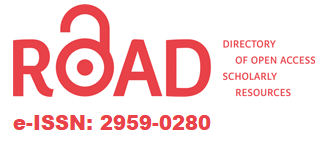Novel Approach in Hypertension Management
A Review on Current Technologies
DOI:
https://doi.org/10.59480/phahs.v1i1.6Keywords:
Hypertension, Self Managment, New method hypertension managementAbstract
Systemic hypertension is the largest causes of morbidity and mortality in the world and is one of main causes that leading to increased risk of cardiovascular disease (CVD). Less than half of hypertensive patients are aware of their condition, despite it is currently undertreated, but the control of high blood pressure is successful. This will reduce the global burden of illness and death. The etiology of hypertension includes a genetic predisposition and a complex interaction of pathophysiological, genetic and environmental factors. Hypertensive patient needs to measurement of blood pressure (BP), studying of expected risk of atherosclerotic cardiovascular disease and other organ damage, or knowing of secondary reasons for hypertension. Lifestyle changes are effective in lowering blood pressure and stopping the consequences of hypertension and CVD, along with dietary adjustments and increased physical activity. Pharmacological treatment are efficient in controlling blood pressure and stopping the consequences of cardiovascular disease in the elderly patients. The first-line antihypertensive drugs consists of ACE inhibitor (angiotensin converting enzyme), angiotensin II receptor blocker, dihydropyridine calcium channel blocker, and thiazide diuretic.
References
Luft FC. Twins in Cardiovascular Genetic Research. Hypertension. 2001;37:350–356.
Fagard Rm et al. Heritability of Conventional and Ambulatory Blood Pressures : A Study in Twins. Hypertension. 1995;26:919–924.
Dominiczak A, Delles C and Padmanabhan S. Genomics and Precision Medicine for Clinicians and Scientists in Hypertension. Hypertension 69, e10–e13. 2017.
Sundström J, Arima H and Woodward M. Blood Pressure Lowering Treatment Trialists’ Collaboration. Blood pressure-lowering treatment based on cardiovascular risk: a meta-analysis of individual patient data. Lancet. 2014;384:591–598.
Health line. 2021. Types of Hypertension: Primary, Secondary, Causes, and More. [online] Available at: <https://www.healthline.com/health/types-and-stages-of-hypertension> [Accessed 21 Novmber 2021]
Poulter NR, Prabhakaran D and Caulfield M. Hypertension. Lancet. 2015;386:801–812.
Rapsomaniki E, et al. Blood pressure and incidence of twelve cardiovascular diseases: lifetime risks, healthy life-years lost, and age-specific associations in 1·25 million people. Lancet. 2014;383:1899–1911.
Stamler J, Stamler R and Neaton JD. Blood pressure, systolic and diastolic, and cardiovascular risks. US population data. Arch. Intern. Med. 1993;153:598–615.
Klag MJ, et al. Blood pressure and end-stage renal disease in men. N. Engl. J. Med. 1996;334:13–8.
Hall ME and Hall JE. Pathogenesis of Hypertension. Hypertension: A Companion to Braunwald’s Heart Disease. 2018:33–51.
Whelton PK, et al. Efficacy of nonpharmacologic interventions in adults with high-normal blood pressure: results from phase 1 of the Trials of Hypertension Prevention. Trials of Hypertension Prevention Collaborative Research Group. Am. J. Clin. Nutr. 1997;65:652S–660S.
Mikael L. de R, et al. Vascular Aging and Arterial Stiffness. Arq. Bras. Cardiol. 2017;109:253–258.
Harrison DG and Bernstein KE Inflammation and Immunity in Hypertension. Hypertension: A Companion to Braunwald’s Heart Disease. 2018:60–69.
Zhou ZH & Bubien JK Nongenomic regulation of ENaC by aldosterone. Am. J. Physiol. Cell Physiol. 2001;281:C1118–30.
Dickson RC, Gaebel K, Zizzo A, et al. Self-reported physician adherence to guidelines for measuring blood pressure. J Am Board Fam Med. 2013;26:215-7.630
Roush GC, et al. Prognostic impact from clinic, daytime, and night-time systolic blood pressure in nine cohorts of 13 844 patients with hypertension. J. Hypertens. 2014;32:2332–2340.
Stergiou GS, et al. Methodology and technology for peripheral and central blood pressure and blood pressure variability measurement. J. Hypertens. 2016;34:1665–1677.
Grant RW, Pandiscio JC, Pajolek H, Woulfe A, Pelletier A, Kvedar J, et al. Implementation of a web-based tool for patient medication self-management: the Medication Self-titration Evaluation Programme (Med-STEP) for blood pressure control. Inform Primary Care. 2012;20(1):57–67.
McManus RJ, Mant J, Bray EP, Holder R, Jones MI, Greenfield S, et al. Tele-monitoring and self-management in the control of hypertension (TASMINH2): a randomised controlled trial. Lancet. 2010;376(9736):163–72.
Omboni S and Ferrari R. The role of telemedicine in hypertension management: focus on blood pressure telemonitoring. Curr Hypertens Rep. 2015;17(4):535.
He J, et al. Migration, blood pressure pattern, and hypertension: the Yi Migrant Study. Am. J. Epidemiol. 1991;134:1085–101.
Rosenthal T. The effect of migration on hypertension and other cardiovascular risk factors: A review. J. Am. Soc. Hypertens. 2014;8:171–191.
The effects of non-pharmacologic interventions on blood pressure of persons with high normal levels. Results of the Trials of Hypertension Prevention, Phase I. JAMA. 1992;267:1213–20.
Effects of weight loss and sodium reduction intervention on blood pressure and hypertension incidence in overweight people with high-normal blood pressure. The Trials of Hypertension Prevention, phase II. The Trials of Hypertension Prevention Collaborative Research Group. Arch. Intern. Med. 1997;157:657–67.
Sacks FM, et al. Effects on blood pressure of reduced dietary sodium and the Dietary Approaches to Stop Hypertension (DASH) diet. DASH-Sodium Collaborative Research Group. N. Engl. J. Med. 2001;344:3–10.
He FJ and Li J. Macgregor GA. Effect of longer term modest salt reduction on blood pressure: Cochrane systematic review and meta-analysis of randomised trials. BMJ. 2013;346:f1325.
He FJ and MacGregor GA. Reducing Population Salt Intake-Time for Global Action. J. Clin. Hypertens. 2014;17:10–13.
Xin X et al. Effects of alcohol reduction on blood pressure: a meta-analysis of randomized controlled trials. Hypertens. 1979; 38,1112–7.
Roerecke M, et al. The effect of a reduction in alcohol consumption on blood pressure: a systematic review and meta-analysis. Lancet Public Heal 2. 2017:e108–e120.
Börjesson M, Onerup A, Lundqvist S and Dahlöf B. Physical activity and exercise lower blood pressure in individuals with hypertension: narrative review of 27 RCTs. Br. J. Sports Med. 2016;50:356–361.
Stevens VJ. Long-Term Weight Loss and Changes in Blood Pressure: Results of the Trials of Hypertension Prevention, Phase II. Ann. Intern. Med. 2001;134:1.
Emanuela Falaschetti, Moushumi Chaudhury, Jennifer Mindell and Neil Poulter Continued Improvement in Hypertension Management in England: Results From the Health Survey for England 2006. Hypertension. 2009; 53: 480-486.
Oparil S & Schmieder RE New Approaches in the Treatment of Hypertension. Circ. Res 2015;116:1074–1095.
Jordan J et al. Improved Insulin Sensitivity With Angiotensin Receptor Neprilysin Inhibition in Individuals With Obesity and Hypertension. Clin. Pharmacol. Ther. 2016;101:254–263.
Williams B et al. Spironolactone versus placebo, bisoprolol, and doxazosin to determine the optimal treatment for drug-resistant hypertension (PATHWAY-2): a randomised, double-blind, crossover trial. Lancet (London, England). 2015;386:2059–68.
Kostis JB, Packer M, Black HR, et al. : Omapatrilat and enalapril in patients with hypertension: the Omapatrilat Cardiovascular Treatment vs. Enalapril (OCTAVE) trial. Am J Hypertens. 2004;17(2):103–11.
Packer M, Califf RM, Konstam MA, et al. : Comparison of omapatrilat and enalapril in patients with chronic heart failure: the Omapatrilat Versus Enalapril Randomized Trial of Utility in Reducing Events (OVERTURE). Circulation. 2002;106(8):920–6.
Ruilope LM. Aldosterone, hypertension, and cardiovascular disease: an endless story. Hypertension. 2008; 52:207–208.
Colussi G, Catena C and Sechi LA. Spironolactone, eplerenone and the new aldosterone blockers in endocrine and primary hypertension.J Hypertens. 2013;31:3–15.
Garthwaite SM and McMahon EG. The evolution of aldosterone antagonists. Mol Cell Endocrinol. 2004;217:27–31.
von Scholten BJ, Lajer M, Goetze JP, et al. : Time course and mechanisms of the anti-hypertensive andrenal effects of liraglutide treatment. Diabet Med. 2015;32(3):343–52.
Marso SP, Daniels GH, Brown-Frandsen K, et al. : Liraglutide and Cardiovascular Outcomes in Type 2 Diabetes. N Engl J Med. 2016;375(4):311–22.
Calhoun DA, et al. Resistant Hypertension: Diagnosis, Evaluation, and Treatment: A Scientific Statement From the American Heart Association Professional Education Committee of the Council for High Blood Pressure Research. Hypertension. 2008;51;1403–1419.
Sim JJ, et al. Characteristics of Resistant Hypertension in a Large, Ethnically Diverse Hypertension Population of an Integrated Health System. Mayo Clin. Proc. 2013;88:1099–1107.
Krum H et al. Catheter-based renal sympathetic denervation for resistant hypertension: a multicentre safety and proof-of-principle cohort study. Lancet. 2009;373:1275–1281.
Heusser K, et al. Carotid Baroreceptor Stimulation, Sympathetic Activity, Baroreflex Function, and Blood Pressure in Hypertensive Patients. Hypertension. 2010;55:619–626.
O’Callaghan EL et al. Chronic Deep Brain Stimulation Decreases Blood Pressure and Sympathetic Nerve Activity in a Drug- and Device-Resistant Hypertensive Patient. Hypertension. 2017;69, 522–528.
Lobo MD, et al. Central arteriovenous anastomosis for the treatment of patients with uncontrolled hypertension (the ROX CONTROL HTN study): a randomised controlled trial. Lancet. 2015;385:1634–1641.
Testa MA and Simonson DC Assessment of Quality-of-Life Outcomes. N. Engl. J. Med. 1996;334:835–840.
Trevisol DJ, Moreira LB, Kerkhoff A, Fuchs SC & Fuchs FD Health-related quality of life and hypertension: a systematic review and meta-analysis of observational studies. J. Hypertens. 2011;29:179–188.
Bardage C and Isacson DG Hypertension and health-related quality of life. an epidemiological study in Sweden. J. Clin. Epidemiol. 2001;54:172–81.
Organisation WH. World Health Organization (2013), A global brief on hypertension. Report. 2013 April 2013. Contract No.: WHO/DCO/WHD/2013.2.
Wolf-Maier K, Cooper RS, Kramer H, Banegas JR, Giampaoli S, Joffres MR, et al. Hypertension treatment and control in five European countries, Canada and the United States. Hypertension. 2004;43(1):10–7.
Burke LE, Ma J, Azar KM, Bennett GG, Peterson ED, Zheng Y, et al. Current science on consumer use of Mobile health for cardio- vascular disease prevention: a scientific statement from the American Heart Association. Circulation. 2015;132(12):1157–213.
Downloads
Published
How to Cite
Issue
Section
License
Copyright (c) 2022 Asmaa A. Ahmed, Tariq W. Sadeq

This work is licensed under a Creative Commons Attribution-NonCommercial-NoDerivatives 4.0 International License.
All PHAHS Journal articles are published under the terms of the Creative Commons Attribution-NonCommercial-NoDerivatives 4.0 International License (CC BY-NC-ND 4.0) which allows authors retain copyright and others may not use the material for commercial purposes. A commercial use is one primarily intended for commercial advantage or monetary compensation. If others remix, transform, or build upon the material, they may not distribute the modified material.
Copyright on any research article published by the PHAHS Open Access journal is retained by the author(s). Authors also grant any third party the right to use the article freely as long as its original authors, citation details and publisher are identified.
Use of the article in whole or part in any medium requires attribution suitable in form and content as follows: [Title of Article/Author/Journal Title and Volume/Issue. Copyright (c) [year] [copyright owner as specified in the Journal]. Links to the final article on PHAHS website are encouraged where applicable.
The CC BY-NC-ND 4.0 Creative Commons Attribution License does not affect the moral rights of authors, including without limitation the right not to have their work subjected to derogatory treatment. It also does not affect any other rights held by authors or third parties in the article, including trademark or patent rights, or the rights of privacy and publicity. Use of the article must not assert or imply, whether implicitly or explicitly, any connection with, endorsement or sponsorship of such use by the author, publisher or any other party associated with the article.










